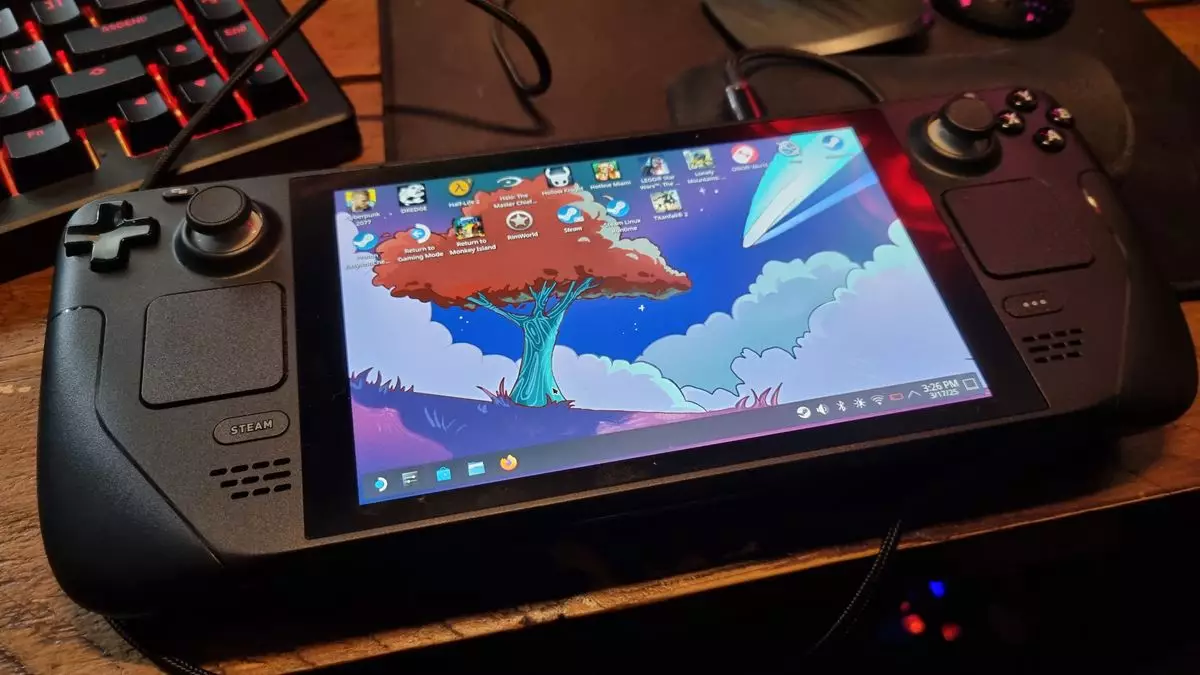Since its initial release with the Steam Deck in 2022, SteamOS has continued to make waves in the gaming community. As the first widely recognized Linux-based operating system designed specifically for gaming, it has garnered attention not only for its performance but also for its blend of usability and robustness. With the impending arrival of SteamOS 3.0 on devices like the Lenovo Legion Go S, there’s renewed interest in how Valve’s software can redefine the handheld gaming experience. The recent SteamOS 3.7.0 Preview update introduces noteworthy advancements, illustrating Valve’s commitment to expanding its ecosystem beyond just the Steam Deck.
New Horizons: Support for Non-Steam Deck Handhelds
One of the most significant aspects of the SteamOS 3.7.0 Preview update is its introduction of support for non-Steam Deck handheld devices. This move is strategic, positioning Valve to capitalize on a growing market of portable gaming solutions. The Lenovo Legion Go S seems to be the harbinger of this new wave, but the real question looms: will this be a fleeting endeavor, or is it the beginning of a robust support network for an array of handhelds?
Currently, Valve has laid a solid foundation with this update, hinting at a future where more devices might integrate SteamOS. While the Legion Go S is the only company formally announced, similar developments could easily follow, especially as competition in the handheld gaming space intensifies. Valve seems poised to attract gaming enthusiasts craving a cohesive, Steam-integrated experience without being strictly bound to proprietary hardware.
Features and Innovations: Plasma 6.2.5 and the User Interface
Beyond mere compatibility enhancements, the update to Plasma 6.2.5 presents an improved user interface that may significantly elevate player interactions. With features like floating panels and an upgraded settings menu, Valve is injecting a sense of modernity and accessibility into the platform. This fresh interface design—a tasteful nod to retro aesthetics with the reincorporation of the “cube effect”—invites users to explore their gaming environment in ways that evoke nostalgia while also maintaining functionality.
However, those exploring this Preview update should remain aware that it is a work in progress. Reports of bugs and glitches—ranging from power button issues to the occasional freezing—underscore the growing pains that often accompany software development. While these imperfections can temper excitement, they also highlight Valve’s iterative approach, demonstrating a commitment to refining the system through user feedback.
Bluetooth and Docking Improvements: A Smoother Experience
The enhancements made in Bluetooth connectivity and the Deck Dock offer practical benefits that could significantly enhance daily use. As gaming increasingly leans on wireless technology, seamless connectivity becomes paramount. With fixes aimed at Bluetooth devices and compatibility improvements for displays used via the Dock, Valve has taken steps to alleviate past frustrations experienced by users. These fixes are not revolutionary, but they contribute to a smoother overall user experience, which is essential for maintaining engagement and satisfaction.
The ability to function effectively across multiple devices—whether utilizing Bluetooth peripherals or connecting to external displays—positions SteamOS as a viable option for both casual and hardcore gamers alike.
Challenges Ahead: Is It Too Little, Too Late?
While the advancements are promising, one must critically assess whether this development comes too late to reclaim a significant share of the ever-expanding handheld gaming market. Many gaming PCs and consoles that do not run on SteamOS already come equipped with impressive launcher interfaces that present games in an organized manner. This scenario raises concerns about whether SteamOS can differentiate itself effectively when competing against existing systems.
Furthermore, while Valve’s seamless Steam integration offers unparalleled access to a rich library, the competition is adopting user-friendly interfaces in their own right. Alternatives like Windows 11 with its Big Picture mode provide gamers with practical launch options that, despite not being as integrated as Steam, offer easy navigation on smaller screens.
Yet, the essence of SteamOS remains its targeted focus on gaming—a feature that can’t be understated in an era where gaming experiences often become convoluted by extraneous functionalities. Valve’s willingness to embrace and cater to the passionate gaming community is commendable; still, one must wonder: can SteamOS keep pace in a domain that thrives on rapid evolution, or will it fall to the wayside as newer, more efficient systems captivate audiences? There is a mystery at the heart of SteamOS’s journey—a gamble that could redefine the handheld gaming landscape or leave it scrambling to catch up in an increasingly competitive market.

